How to build and scale a successful B2B marketplace
The business-to-business eCommerce market is massive. Here's how to leverage its potential.
A business-to-business (B2B) marketplace is a platform where companies buy, sell, or rent products and services from one another. Think of Alibaba, which connects manufacturers and wholesalers with global buyers, and eBay Business Supply, which connects companies to surplus inventory and equipment.
B2B is also a massive, fast-growing opportunity for marketplace founders. In 2024, the global B2B e-commerce market was valued at just over $2.1 trillion and is expected to exceed $100 trillion by 2034.
This explosive growth has been driven by increased digital adoption and pandemic-accelerated trends, like supply chain disruptions and the shift to self-service procurement. So, B2B marketplaces are an especially attractive business model for founders.
In B2B, a lot of blue ocean remains. Much of the market is still completely undigitized—and ripe for the marketplace revolution.
This guide shows how to turn a B2B marketplace idea into a thriving business. You’ll learn what makes these platforms so powerful, the challenges to expect, and the practical steps to launch quickly and grow with confidence.
A business-to-business (B2B) marketplace facilitates transactions between businesses. B2B marketplaces can operate in:
- Products, such as retail and manufacturing
- Services, such as trading and hiring professionals
- Rentals, such as equipment, office, storage, or manufacturing space
Generally, B2B marketplaces fall into two main categories: vertical and horizontal.
Vertical marketplaces specialize in specific product or service types. For example, Faire is a wholesale retail marketplace, and Freightos offers freight services. (We recommend listening to this podcast episode with Freightos CEO Ruthie Amaru, which is packed with insights on B2B marketplaces.)
Horizontal marketplaces offer diverse categories. An example is Amazon Business, a B2B e-commerce marketplace.
In contrast to peer-to-peer (P2P) and business-to-consumer (B2C) platforms, B2B marketplaces streamline very complex and large-scale business transactions. They accommodate bulk purchases and support intricate internal procurement procedures.
Business-to-business (B2B) and business-to-consumer (B2C) marketplaces operate on the same core principle: connecting buyers and sellers. But the dynamics are very different.
Here’s how they compare:
Users
- B2B: Companies buying and selling to each other (procurement managers, suppliers, distributors)
- B2C: Individual consumers buying from businesses
Transaction size
- B2B: Larger order values, often bulk purchases
- B2C: Smaller, single-item purchases
Sales cycle
- B2B: Longer, involves multiple decision-makers
- B2C: Shorter, often impulsive or opportunistic
Trust and compliance
- B2B: High expectations: buyers require vetting, contracts, and compliance with industry standards
- B2C: Lower expectations: buyers rely on reviews, ratings, and simple return policies
Payments
- B2B: Net terms, escrow, invoices, and negotiated pricing
- B2C: Instant payments via credit card, escrow, or digital wallets
Repeat business
- B2B: High likelihood: companies often become recurring customers
- B2C: Lower likelihood: consumer loyalty depends on convenience, experience, and price
The differences between B2B and B2C marketplaces extend beyond who uses your platform. They also shape how you validate, build, and grow it.
Here are the main ways B2B marketplaces operate differently:
- Validating your idea: Focus on procurement teams and suppliers to uncover real pain points. Consumer-style surveys won’t give useful answers.
- Building your platform: Prioritize features built for complex transactions, like Requests for Quotes (RFQs), role-based accounts, and escrow or net-terms payments.
- Launching your MVP: Adoption takes longer in B2B, so early case studies and trusted suppliers are critical for credibility.
- Growing your marketplace: Success depends on long-term relationships, compliance, and network effects, not quick viral growth.
Understanding these dynamics early helps you set realistic expectations, avoid wasted effort, and build a marketplace that solves real business problems.
Unicorns like Airbnb, Etsy, and Thumbtack paved the way for the marketplace model across sectors. B2B markets have been slower to embrace this trend, but change is underway.
As of 2024, 56% of B2B revenue in the United States originates from digital channels, up from 45% in 2023, highlighting the rapid shift to online buying. A 2024 McKinsey analysis reported that B2B buyers now evenly split their engagement across in-person, remote, and self-serve digital channels. This trend is referred to as the “rule of thirds” and has remained stable post-pandemic .
For early-stage founders, the shift to digital opens a lucrative window of opportunity:
- Access to high-volume, recurring revenue: B2B transactions are larger, more predictable, and often repeat purchases. This creates higher average order values and stronger customer lifetime value.
- Compounding efficiency and trust advantages: By digitizing procurement and supply chains, marketplaces increase transparency, reduce friction, and build long-term trust. This results in powerful network effects.
- Lower competition in many verticals: While consumer marketplaces are crowded, many B2B niches remain underserved, which leaves room for new entrants to dominate specific industries or geographies.
- Multiple revenue stream opportunities: B2B marketplaces can expand beyond transaction fees through two proven paths. Some platforms start as marketplaces and later add complementary SaaS tools like analytics dashboards, financing, or logistics support. Others take the reverse approach - beginning as compelling SaaS offerings for one side of the market, then opening up as a marketplace once they've established strong relationships and proven product-market fit. This SaaS-first strategy can be less risky for founders, as seen with companies like Freightos, which built freight management software before becoming a marketplace connecting shippers and carriers.
Together, these factors make B2B marketplaces one of the most profitable and defensible business models available today.
Still, there are aspects of B2B that slow down the online marketplace takeover.
Marketplaces entering the B2B space face a number of industry-specific challenges and platform requirements compared to B2C. The B2B transaction and order flows are decidedly more complex than those on B2C or P2P marketplaces. (We’ll explore this in more detail later.)
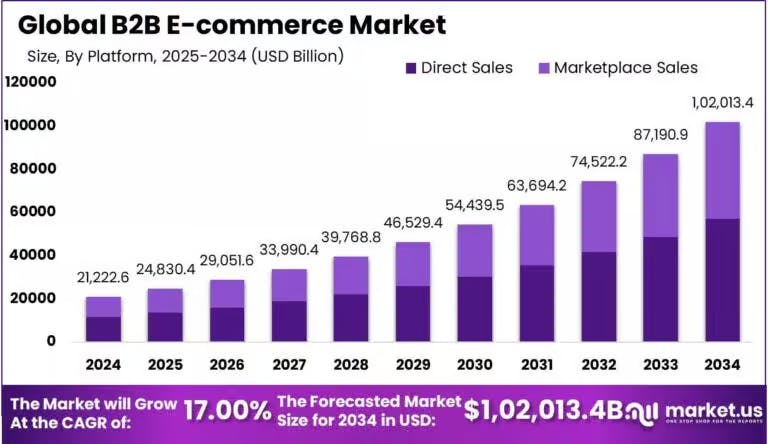
Despite the challenges, many investors have brought up B2B as an enormous opportunity for marketplaces. For more thought-provoking insights, check out our interviews with investors Josh Breinlinger, Fabrice Grinda, Ben Narasin, James Currier, and Mathias Ockenfels.
Let’s explore some of the biggest B2B marketplaces globally and in the United States. In 2024, North America accounted for over 40% of global B2B e‑commerce (or roughly $8.5 trillion), earning it a dominant position in the space.
Amazon Business has become a major player in the B2B e-commerce landscape, having reached $35 billion in annualized sales in 2023.
Amazon’s rapid growth can certainly be attributed to its prior success in the B2C space. More than 6 million businesses, including 96 of the Fortune 100 companies, are now purchasing on Amazon Business.
Amazon Business offers features like business-specific pricing, multi-user accounts, and analytics tools to enhance the buying experience. It supports integrations with over 100 procurement, payments, and ERP systems, making it efficient for companies with highly distinctive procurement processes.
eBay Business Supply offers a vast selection of products ranging from electronics to business supplies. It caters to the needs of business buyers who seek value and price transparency.
A key aspect of eBay’s B2B success is its ability to help small businesses reach a global audience and facilitate their growth. Unlike other marketplaces, eBay has no first-party retail business, so it doesn’t compete with its vendors, strengthening its appeal among B2B sellers. This approach has led eBay to see significant growth in its B2B segment.
Alibaba’s rise in the B2B marketplace is a result of its early strategic focus on underrepresented small- to mid-sized businesses (SMBs) in China. By facilitating connections to small entrepreneurs in China with no access to international markets, Alibaba rapidly consolidated its position as a market leader.
Another key building block for Alibaba was trust. Trust was a significant issue in the early days of China’s e-commerce ecosystem. Alibaba addressed this by introducing the “Trust Pass” system, which rated merchants on various factors and prioritized listings by the market’s most reliable and trusted participants.
This strategy helped establish a baseline level of trust, which became essential to the platform’s long-term success. Diversification and expansion have further solidified Alibaba’s position as a global leader in B2B e-commerce.
Global Sources has operated in the business-to-business trade for over 50 years. It provides buyers worldwide access to new products and qualified B2B lead generation with Chinese manufacturers. It follows Alibaba as the second-largest B2B marketplace in China.
The platform’s success is largely attributed to its extensive industry experience and ability to cater to a diverse range of business needs and sectors.
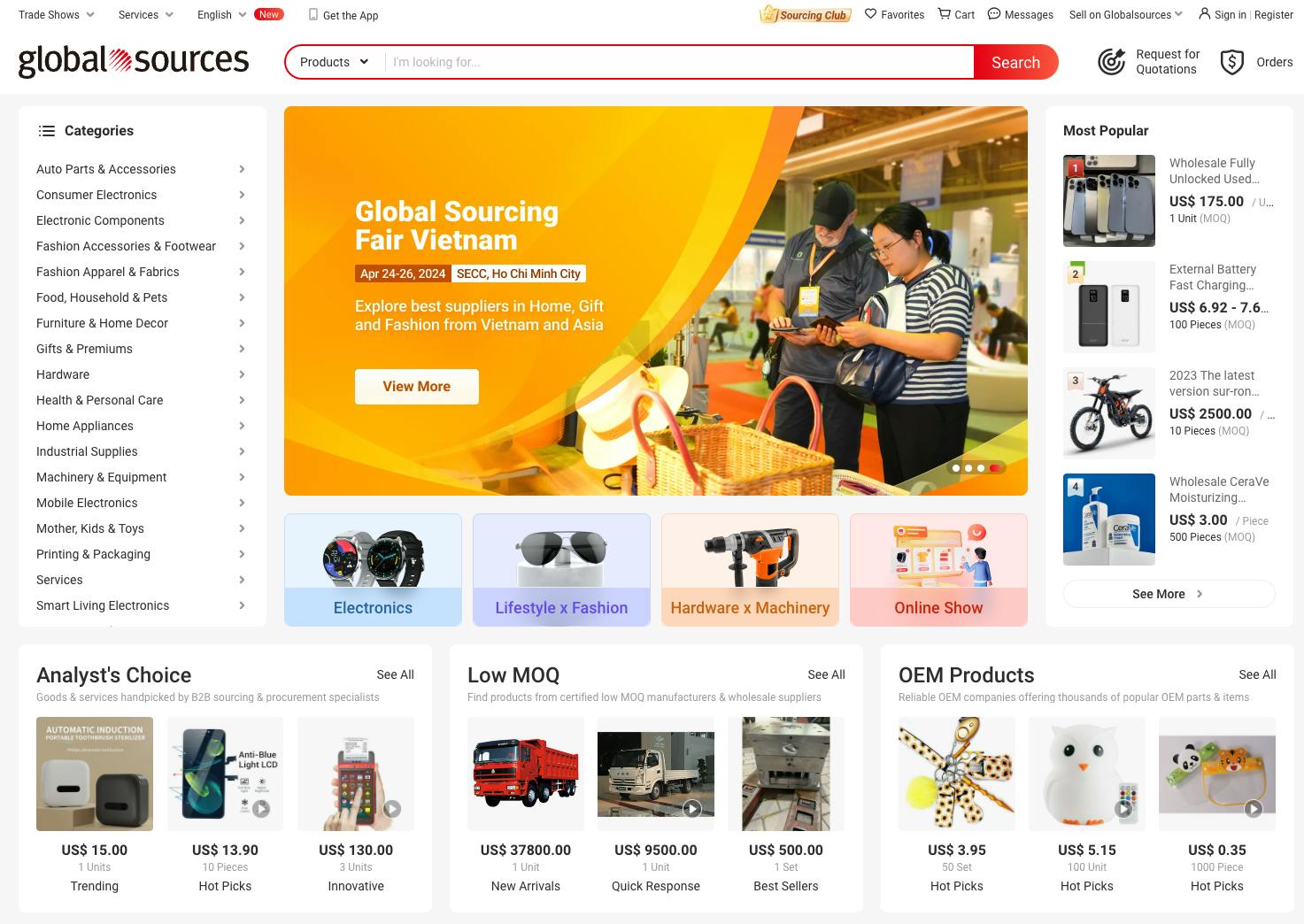
Indiamart is the largest B2B marketplace in India (capturing 60% of the market share) and a significant player globally.
Unlike most B2B marketplaces, the platform operates on a freemium model, offering basic services for free while charging for premium features. The paid features include business listings, buy leads, lead management, payment processing services, customer support, marketplace insights, international and domestic reach, and a mobile application.
This approach has meant rapid growth for Indiamart's SMB-dominated user base and supported its expansion to over 100 countries worldwide.
Indiamart is the largest B2B marketplace in India (capturing nearly 60% of the market share) and a significant player globally.
Unlike most B2B marketplaces, the platform operates on a freemium model, meaning it offers basic services for free and charges for premium features. Paid features include business listings, buy leads, lead management, payment processing services, customer support, marketplace insights, international and domestic reach, and a mobile application.
This approach has led to rapid growth for Indiamart’s SMB-dominated user base and supported its expansion to over 100 countries worldwide.
Faire has gained significant attention and success in the retail industry in the United States. Its marketplace platform connects independent retailers with brands and artisans worldwide.
Farie specializes in unique, often handcrafted or artisanal products. This range appeals to retailers looking to differentiate their inventory with items not commonly found in larger, mainstream retail chains or platforms.
By focusing on independent and local makers, Faire helps smaller brands gain access to a broader market that they might struggle to reach on their own. Its expansion is backed by substantial venture capital funding.
Joor is a wholesale luxury marketplace that serves the fashion, beauty, and home industries.
Joor has been instrumental in digitizing the wholesale buying process in the fashion industry, a sector traditionally reliant on in-person interactions and paper-based processes. The platform boasts a large and diverse client base, including high-profile brands and retailers.
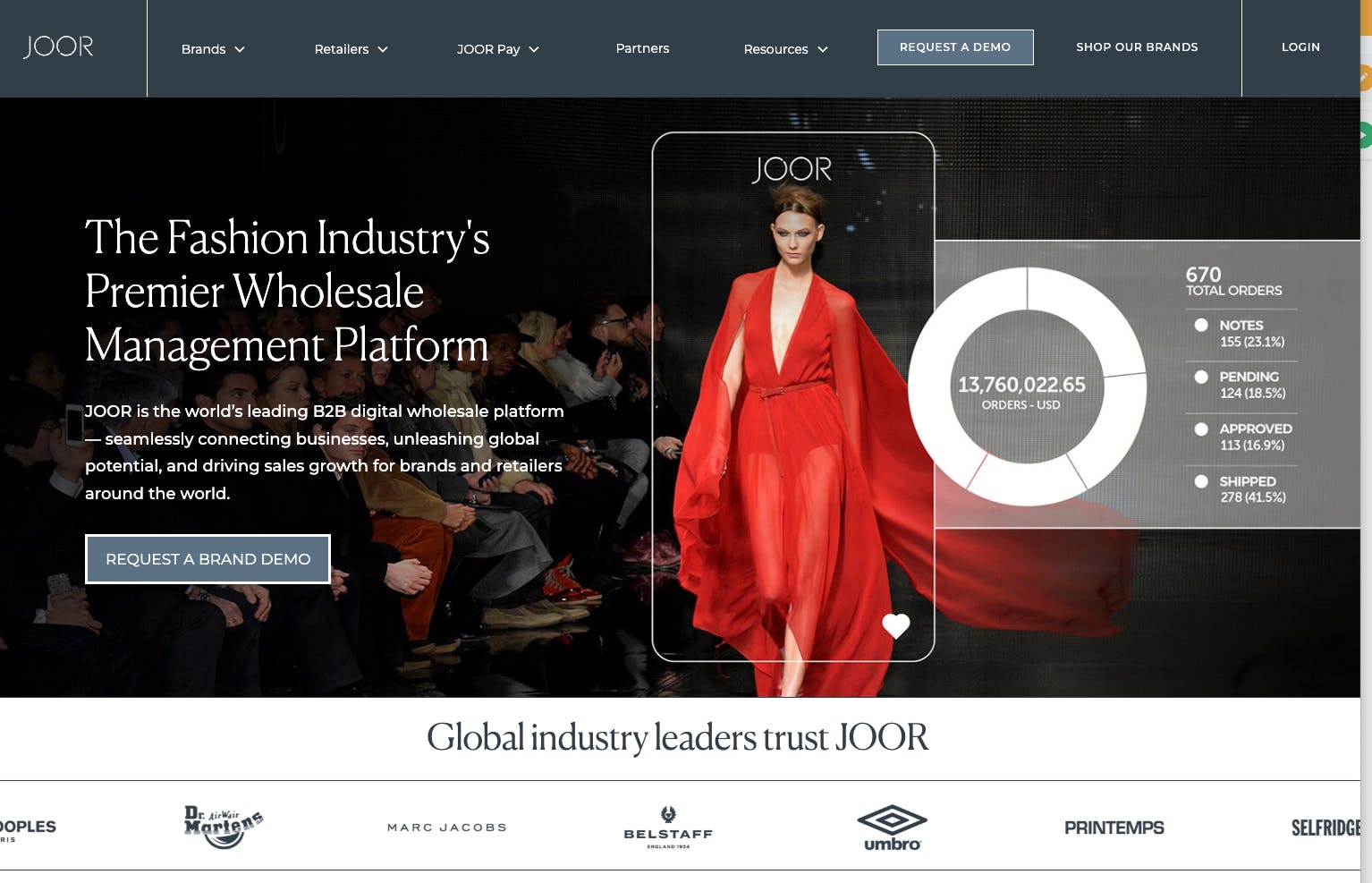
Indigo Agriculture is a notable player in the U.S. agricultural sector. The platform connects farmers with buyers (like grain processors and food companies) to facilitate the sale of crops. Indigo also engages in the carbon credit market.
Indigo strongly emphasizes sustainable and environmentally friendly farming practices to improve crop health and productivity while reducing environmental impact. The company offers data-driven tools and insights to enable farmers to optimize their farming practices.
Indigo’s approach of integrating technology with traditional farming has been a key factor in its success. By offering innovative solutions like microbial seed treatments and a digital marketplace, Indigo has positioned itself as a leader in agricultural innovation.
Material Bank is a growing B2B marketplace focused on the architecture and design industry. It provides a platform for professionals to find and sample materials such as fabrics, tiles, wall coverings, flooring, paint, and more from a vast array of suppliers.
A key feature of Material Bank is its ability to provide material samples quickly. Design professionals can order samples and typically receive them within a very short timeframe, which is a significant advantage in the fast-paced design industry.
Farmers Business Network (FBN) collects and analyzes all kinds of agricultural data, such as seed performance, input efficacy, and pricing information, to empower farmers to make data-driven decisions. A key offering is its marketplace, which directly connects suppliers of agricultural inputs like seeds, chemicals, and fertilizers with farmers.
As a network, FBN facilitates a community of farmers where they can share knowledge, experiences, and best practices. This peer-to-peer interaction is a valuable resource for many farmers.
The size of the B2B e-commerce market alone presents a business opportunity.
This is especially true for a marketplace entrepreneur or a business looking to expand its offering with a marketplace platform.

Marketplaces thrive in markets with high single transaction value or high transaction frequency, exemplified by B2C and P2P unicorns like Airbnb and Uber.
Surprisingly, a study on the top 100 marketplaces by the VC firm Andreessen Horowitz reveals that successful marketplaces can operate with various combinations. Many B2C marketplaces have thrived even in low-value, low-frequency markets.
One category, which the authors of the study label “The Holy Grail,” has both high purchase frequency and high average order value.
This combination is difficult to find.
But B2B marketplace platforms have tremendous potential to fall into this category. Services like freight, machinery rentals, or product sales of large quantities of goods are often high-value transactions that happen regularly. The opportunity for a commission-based marketplace business model is evident.
In the consumer realm, nearly any demand can be satisfied through a simple click.
But in the B2B landscape, high-value, high-frequency transactions often still rely on pen and paper, phone, and even fax.
These practices persist for valid reasons: high stakes; the resulting high need for trust, price negotiations, certificate exchanges; and complex purchase chains that involve multiple parties and locations.
These complicated processes can produce significant inefficiencies. But marketplaces can help overcome them.
If a marketplace can solve the underlying requirements—trust, oversight, and administrative requirements—while streamlining the steps, it can improve productivity in each step of the B2B purchase process.
The opportunity to deliver efficiency and convenience to the individuals responsible for these transactions can make marketplaces remarkably sticky and resistant to leakage (where users connect through a marketplace but complete transactions off-platform).
Marketplaces are great for aggregating products or services, especially in fragmented B2B markets with numerous small suppliers lacking an online presence.
These markets often rely on personal contacts or intermediaries like brokers and agencies. Building a marketplace in a market with high fragmentation could make finding a B2B provider infinitely easier. And bring transparency and efficiency to the transactions.
A marketplace can offer a streamlined alternative to these go-betweens or work with them to increase efficiency for all parties involved.
As a result of the B2C marketplace revolution, private consumers are very accustomed to solving problems through e-commerce and online marketplace platforms. We’re familiar with standard marketplace procedures, marketplace payments, and trust-building elements like reviews and identity verification.
The change of habits in B2C spills over to B2B. As individuals grow accustomed to marketplaces in their personal lives, they also find it easier to embrace online platforms when making business purchases.
The barrier to adopting new technologies is lower today than in the early marketplace era.
Another clear difference between B2C and B2B is that most new customer-facing marketplaces must take on existing competitors and innovate on products to compete. B2B marketplace platforms still have unexplored market space, known as a blue ocean.
Finding a blue ocean means marketplace founders can focus on solving the chicken-and-egg problem and achieving liquidity without battling an incumbent.
As a result, they gain the upper hand in building network effects and defensibility over time.
Introducing a marketplace component lets business engage their audience in new ways.
This approach minimizes the financial risks associated with traditional business expansion. Third-party suppliers bring their own capabilities, marketing, and customer networks, easing the original business’s investment burden.
A marketplace can also provide a new avenue to build relationships with customers and increase loyalty. An ecosystem of third-party suppliers can serve a wide variety of customer needs and quickly adapt to new developments in the market.
I recommend this talk by James Currier at the latest Marketplace Conference, where he discusses why the 2020s are a great time to build a B2B marketplace and gives away 24 tactics to make an online B2B marketplace work.
Marketplaces—whether they’re B2B, B2C, or P2P—are challenging businesses to start.
First off, marketplaces are more trust-sensitive than traditional e-commerce. Transactions and payment processing are more complex between three parties (buyer, seller, and platform) than just two.
User acquisition, retention, and liquidity-building strategies are complicated, too. Often, marketplace buyers and suppliers are two distinct user groups with different needs.
In B2B, many of these challenges are intensified. Let’s look at two core challenges: transactions and trust.
B2B transactions are notably more intricate than their B2C and C2C counterparts. They encompass extended sales cycles with stages from requesting a proposal to negotiation and contract signing.
This process often necessitates certifications, verifications, and NDA agreements. Supplier practices, like working with cost estimates, clash with customer expectations for precise tracking and billing.
Organizations can also have unique payment, billing, and credit requirements.
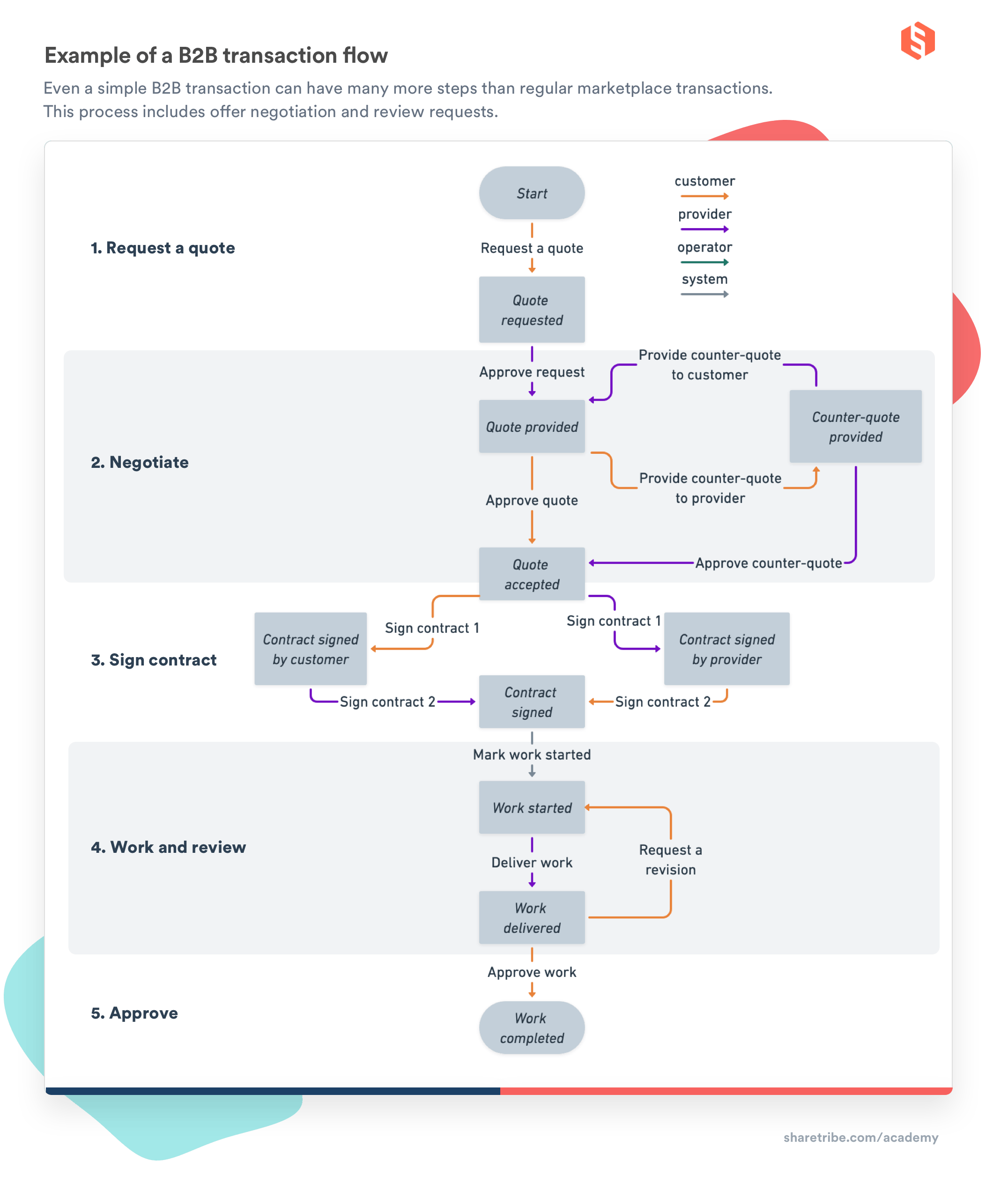
Second, you must bring these complex transactions to an online platform and perfect the UX demands with sophisticated technology and exceptional product management.
Facilitating payments is a core value proposition for any marketplace platform. In B2B, where a marketplace can offer a smooth, convenient process to replace countless back-and-forth, this is especially important.
Done right, seamless payment processing alone can significantly increase the stickiness of a marketplace.
Owning the transaction is a profitable strategy, as commissions can be charged from customers and suppliers. The commission-based business model creates no additional costs for either party before they strike a deal, decreasing the barrier to entry.
Subscription-based revenue models are also relatively common for B2B businesses, mainly if the offering includes powerful SaaS tools for one or both sides of the marketplace.
The transaction process defines all the possible interactions between a customer and a provider in your marketplace:
- Do customers reach out to suppliers, or vice versa?
- Is there a pre-booking step, or do the parties begin with negotiation?
- Are verification, certificates, contracts, and/or NDAs requested?
- How and when does payment happen?
To support this complexity, a customizable transaction engine is vital for seizing B2B opportunities.
Technologically, this requires integrating a robust backend transaction engine, a user-friendly UX, and a payment service provider. Regulatory compliance for online payments and data protection is essential.
The transaction process unlocks marketplace potential but poses technical challenges. At Sharetribe, we help founders solve these challenges. Our marketplace software offers a powerful, fully customizable transaction engine that lets developers build and modify complex transaction flows easily.
High-quality supply is vital in any marketplace. Freightos CEO Ruthie Amaru talks about this in an episode of our podcast, as does Kevin Lustig, founder of Scientist.org.
For a B2B marketplace platform, ensuring quality supply involves manual efforts such as supplier vetting, onboarding, and removing subpar players, especially in industries with strict standards.
Supply curation includes supporting matching supply and demand. Some marketplaces adopt a white-glove approach to assist demand by defining requirements and connecting with the most suitable suppliers. Creating a set of standard operating procedures and educating both sides of the marketplace may also help.
Platform technology plays a key role in this process. When building your marketplace, ask yourself questions like:
- How do users connect on the platform?
- What’s the search experience like?
- Can parties message before transacting?
- What certification is required and when?
These UX choices significantly impact users’ understanding of the platform’s value. Tailoring the user experience is essential, even during the early stages.
B2B transactions carry substantial financial risk for individuals and their organizations.
While a large transaction value presents opportunities, it also demands trust in the supplier and the platform. A failed purchase can disrupt projects, strain relationships, and create challenges for teams.
In B2B, trust is built over years of established relationships and networks. Moving these relationships online requires marketplace entrepreneurs to invest in long-term trust-building strategies.
To truly replace processes founded on individual relationships, a marketplace has to make a strategic commitment to trust-building activities from day one.
Consumer marketplaces use several tactics to generate and strengthen trust between users, which are covered in depth in our guide to marketplace trust.
Some of the best practices apply to B2B, too: informative listings and company profiles, two-sided reviews, reliable payments, quality guarantees, and insurance. Stellar customer service, transparent pricing, and partnerships with established brands also signal reliability.
Depending on the market, B2B marketplaces may need identity verification, certificates, billable hour tracking, etc. For more B2B-specific trust-building strategies, listen to our podcast episode with Ruthie Amaru, the CEO of Freightos.
Offering a seamless transaction process is a potent value proposition, especially in B2B, which offers countless opportunities to add even more value for users.
An excellent strategy for building an initial audience is to start with a single-player mode where the marketplace first focuses on offering great tools for one side (often the supply). Create a centralized solution for availability management, pricing, billing, shipping, inventory management, taxation, marketing, customer relationship management, and other helpful features.
The demand side and transactions can be introduced to the platform later.
CreXi founder Michael DeGiorgio elaborates on this in episode five of our marketplace podcast, “Embrace, don’t replace, the middleman.” The value-adding functionality GreXi has created is very specific to the commercial real estate industry. Expertise in the domain and an understanding of the underlying motivations help when identifying the biggest pain points in your market.
Single-player mode demands significant tech investment but yields higher retention, customer lifetime value, and reduced platform leakage.
So far, we’ve covered the B2B marketplace requirements, opportunities, and challenges based on a decade of experience working with marketplace founders, experts, and investors. To delve deeper, read our comprehensive guide on how to create a marketplace.
Now, we’ll outline the key steps to building a B2B marketplace, drawn from our proven methodology but adapted to the unique requirements of B2B transactions and buyers.
Before you invest time or money, make sure real businesses in your target vertical actually want what you plan to build. To validate your marketplace idea, talk directly with suppliers and procurement managers to confirm that your marketplace solves a real pain point.
Here are some quick, affordable ways to do so:
- Conduct 10–15 founder-led interviews with suppliers and buyers.
- Offer a manual “concierge” version of your service to test workflows.
- Share a lightweight landing page describing your value proposition.
- Run small paid ads to measure interest or collect sign-ups.
You’ll know you’re ready to move forward with your marketplace idea when you see:
- Strong interest from both buyers and suppliers
- Early sign-ups or pilot commitments
- Clear evidence of recurring demand
At this point, you've validated strong interest in your marketplace concept from both sides of the market. This initial validation confirms there's genuine demand for what you're building, but you'll still need to build an MVP and demonstrate recurring transactions to achieve true problem-solution fit. Once you've confirmed this foundational interest from buyers and suppliers, you can confidently move on to designing the right business model for your platform.
Your business model defines how your marketplace generates revenue. The right choice depends on your vertical, transaction size, and how value flows between buyers and suppliers.
Here are the main business models for marketplaces:
- Commission: Take a percentage of each transaction, which works best for high-volume marketplaces. Most of the biggest marketplaces in the world use the commission model.
- Listing fees: Charge suppliers to publish products or services, which is most effective in fragmented markets.
- Lead fees: Suppliers pay to access qualified buyer requests. This is common for service marketplaces.
- Subscriptions: Recurring fees for platform access, premium tools, or verified status.
- Paid advertising: Suppliers pay for visibility through promoted listings or ads.
Many successful B2B marketplaces combine models once they have achieved sustainable growth, such as charging a commission on transactions while also offering subscription tiers or promoted listings. A hybrid approach can diversify revenue and make your business model more resilient as you scale.
Trust is non-negotiable in B2B marketplaces. On consumer platforms, trust typically comes from secure online payments with escrow, ratings, and reviews.
But in B2B, your users are businesses that often require all their partners to meet strict compliance standards before transacting. Building this foundation early helps you win over procurement teams and reduce friction later.
Below are the core trust and compliance measures you need to build into your B2B marketplace platform:
- Corporate KYC (Know Your Customer) or KYB (Know Your Business): Verify the identity and legitimacy of suppliers and buyers.
- Security frameworks (like SOC 2 or ISO 27001): Signal strong data security practices to enterprise buyers.
- Escrow and net-terms: Protect both sides with payment models that reflect B2B realities.
- Audit trails and dispute policies: Ensure transparency and accountability for every transaction.
- Industry-specific compliance and verification: Unlike B2C marketplaces that can launch with standard trust features, B2B platforms often need custom transaction flows with specialized verifications from day one. This might include industry certifications, regulatory compliance checks, quality assurance protocols, or specialized insurance requirements that are non-negotiable in your target vertical.
Read more in our guide to building trust. Or check out our interview with BlaBlaCar founder Vincent Russo, who shares what B2B marketplaces can learn about trust from their P2P counterparts.
In B2B, long sales cycles often mean you wait months before seeing results from outreach. That delay makes adding more features upfront tempting if you think it might increase your chances of closing buyers or suppliers when the opportunity finally comes.
Resist that urge and launch as early as possible. Your goal is to get a usable platform in front of real buyers and suppliers as soon as possible. Early feedback will teach you more than months of planning in a vacuum.
Here’s why speed matters:
- Early feedback helps you adjust your platform before you lose a full buying season.
- Reaching liquidity is more important than having every feature.
- Early credibility and case studies attract marquee suppliers.
- Live usage reveals which compliance documentation you actually need.
For deeper guidance, see our resources on building a Minimum Viable Platform (MVP), marketplace design principles, and product-market fit.
Your MVP doesn't need every feature you can imagine, but should be thoughtfully designed around your specific market's needs.
Below are common feature categories that successful B2B marketplaces address, based on our 10+ years of experience working with all kinds of marketplace founders:
- Relevant user account types: Consider whether purchasing decisions in your market involve teams or individuals. Corporate accounts with role-based permissions work for complex procurement, while simpler individual accounts may suffice for straightforward transactions.
- Transaction engine: Build workflows that match how your target buyers actually make purchases. This might be RFQ processes for custom pricing, instant checkout for standardized products, or auction-style bidding.
- User-friendly payments: Accommodate the buying processes and payment requirements of your target users, whether that's net-terms, escrow, instant payments, or specialized invoicing.
- Appropriate search and discovery: Match the complexity of your catalog to buyer needs. Complex industrial products need detailed filters and specifications, while simpler services might only need basic category browsing.
- Communication tools: Provide the right level of interaction for your market, from simple messaging for straightforward transactions to comprehensive negotiation tools for complex deals.
- Performance visibility: Give suppliers the data they need to succeed on your platform, whether that's detailed analytics for sophisticated sellers or basic performance metrics for smaller vendors.
- Efficient catalog management: Match your onboarding and management tools to supplier capabilities (bulk upload systems for large catalogs or booking and availability management for service-based offerings).
- Platform administration tools: Build the backend controls you need to manage your specific marketplace model, user base, and transaction types effectively.
Remember, these are just suggestions. You should lean on your own expertise and choose the features that best fit the needs of your marketplace’s niche.
In B2B marketplaces, supply and demand rarely appear organically. You’ll need to build both sides manually at first.
Procurement teams won’t trial a new platform unless they see familiar or trusted suppliers already active. At the same time, suppliers want proof of serious buyer interest before they invest in the effort.
Here’s why manually building supply and demand (at least early on) is the key to success:
- Credibility hurdle: Well-established suppliers reassure procurement teams.
- Long sales cycles: Personal outreach accelerates early adoption.
- Network effects: Once you achieve initial liquidity, each new participant makes your marketplace more valuable to existing users, as more suppliers give buyers better selection and pricing, while more buyers attract higher-quality suppliers. This creates a defensible competitive advantage that becomes harder for competitors to replicate.
Learn more in our guides on building supply, onboarding suppliers, and matching supply and demand.
Once your marketplace is live, track the right metrics to measure traction and prioritize improvements. For B2B platforms, focus on signals that show whether buyers and suppliers are finding real value.
Here are the key marketplace metrics to monitor:
- Liquidity: Monitor both sides - the percentage of RFQs that receive quotes within 24 hours (supplier-side liquidity) and the percentage of supplier listings that receive inquiries or orders within a given timeframe (buyer-side liquidity). Both are strong indicators of marketplace health.
- Gross merchandise volume (GMV): The total value of transactions processed through your platform.
- User base growth: The increase in active suppliers and buyers over time.
- Transaction volume: The number of completed purchases or service bookings.
- Repeat purchase rate: How often buyers return, a key sign of stickiness.
- GMV retention: How much of your GMV you retain month to month.
- Supplier churn: Reveals whether suppliers see ongoing value in participating.
- Average order value (AOV): Tracks transaction size and revenue potential.
- Unit economics: Especially the ratio of CAC (customer acquisition cost) to CLV (customer lifetime value).
Marketplaces are dynamic systems—you can’t afford to wait months before adjusting pricing, workflows, or features. In B2B especially, where buying cycles are seasonal, delayed improvements can mean missing an entire wave of demand.
Shorter, faster iteration cycles help you pinpoint issues, refine your model, and stay ahead of evolving compliance requirements.
Here are some ideas to inspire your iteration process:
- Choose one KPI to focus on each month and dedicate the next sprint to improving it.
- Run dual NPS surveys for buyers and suppliers every quarter.
- Pilot new fee tiers or features with A/B or phased testing in one vertical or region first.
For more strategies, see our guides on growing your marketplace, scaling, and funding.
Nowadays, there are many ways to build a marketplace platform. Let’s go over the most common options for B2B marketplace founders.
Building a B2B marketplace from scratch offers flexibility in platform design but comes with substantial upfront costs and time demands. Hiring developers or agencies can cost over $50,000, excluding ongoing expenses like third-party tools, maintenance, updates, hosting, and monitoring.
If you have in-house development skills and are open to handling maintenance, the costs can be reduced to hosting and third-party tools.
However, consider your time as a founder or project owner. It might be wiser to focus on unique features and growth rather than coding basic functions already common in most marketplaces.
Creating an MVP using a no-code marketplace builder can expedite your launch. But B2B marketplace requirements often surpass what no-code tools offer.
While manual workarounds can fill initial gaps, especially with a small user base, a white-glove approach involving hands-on assistance to suppliers and demand-side users can complement no-code solutions for your MVP.
A SaaS marketplace tool is a convenient starting point for validating business concepts. This method enables rapid site deployment and audience learning without the need to employ a development team.
Sharetribe’s no-code marketplace builder supports this journey and facilitates a seamless transition to custom functionality after idea validation.
API-based marketplace solutions, pioneered by Sharetribe, merge the advantages of custom development and no-code tools. They are designed to tackle exactly the kinds of technical challenges B2B marketplaces face.
Sharetribe offers the core marketplace features without coding, reducing development time and costs by up to 90% compared to building from scratch. This enables fast development since you can focus on the unique features that distinguish your platform from others.
Sharetribe handles maintenance, security compliance, updates, and routine tasks, freeing you to focus on other aspects of running your business. API-based development demands more technical skills and time than fully no-code solutions, but the control and flexibility it offers make it an excellent choice for building a B2B marketplace.
Sharetribe is a headless, API-based marketplace solution with robust no-code functionality designed to bring the benefits of custom development to marketplace SaaS. It helps you launch a B2B marketplace platform quickly and cost-efficiently while giving you complete control over your transaction process, user experience, and additional features.
Below are some of the main benefits of using Sharetribe to build your B2B marketplace business.
Sharetribe provides a powerful transaction process editor for tailoring your B2B order flow. You can:
- Build negotiation flows
- Introduce complex pricing logic
- Support delayed payments or invoicing
- Require verifications
- Integrate digital signatures
- Store custom data during the process
- And much more!
Customizing the default transaction process is straightforward, and third-party integrations and custom features are possible. Sharetribe’s transaction engine streamlines pre-launch development and facilitates further development as you learn more about user needs.
With Sharetribe’s APIs, your marketplace is infinitely extensible. The Integration API, event architecture, and Single Sign-On via OpenID make it simple to integrate Sharetribe with your existing software systems. Add multiple payment systems, custom-develop features, integrate third-party tools to address client needs, and transform your platform into a SaaS-enabled B2B marketplace.
With Sharetribe, you have complete control over your marketplace’s user experience. Customize the Sharetribe Web Template for web or mobile and launch a new platform fast, or integrate marketplace features into your existing software through Sharetribe’s APIs.
Sharetribe’s powerful admin functionality keeps every aspect of your marketplace under your strict control. Monitor and manage the quality of supply, ensure transactions flow smoothly, and store user data securely.
Sharetribe’s powerful backend gives you all the essential features of a B2B marketplace. You can set up your MVP without any coding.
On top of this out-of-the-box functionality, you’re free to custom-develop functionality that your specific B2B audience needs. You’ll save months of development time and get to focus your resources on features that make your marketplace the uniquely perfect fit for your users’ requirements.
Grow your marketplace without worrying about traffic spikes, data security, or compliance. Sharetribe hosts and maintains your marketplace backend and ensures its performance at any scale.
Sharetribe works with vetted agencies and freelancers from around the world. We’re happy to connect you with an experienced Sharetribe developer to help build your marketplace. Find a Verified Expert, and check out our guide on hiring a marketplace developer and describing your marketplace’s requirements.
Sharetribe has helped thousands of marketplace founders launch businesses worldwide. Here are examples of B2B marketplaces built with Sharetribe.
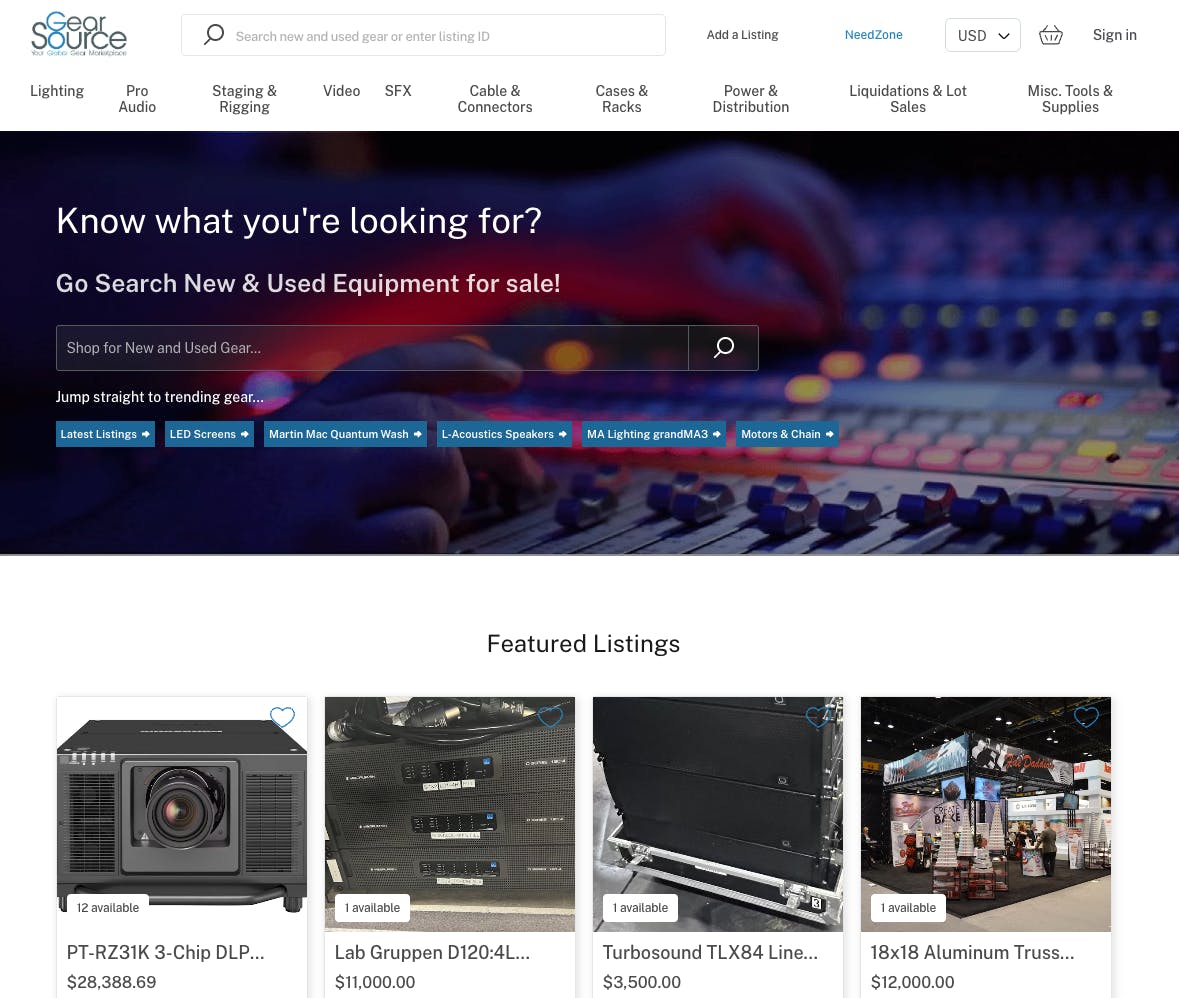
GearSource
GearSource helps rental companies sell professional audio and event production equipment they no longer need. It was founded in 2002, making it one of the oldest marketplaces in existence.
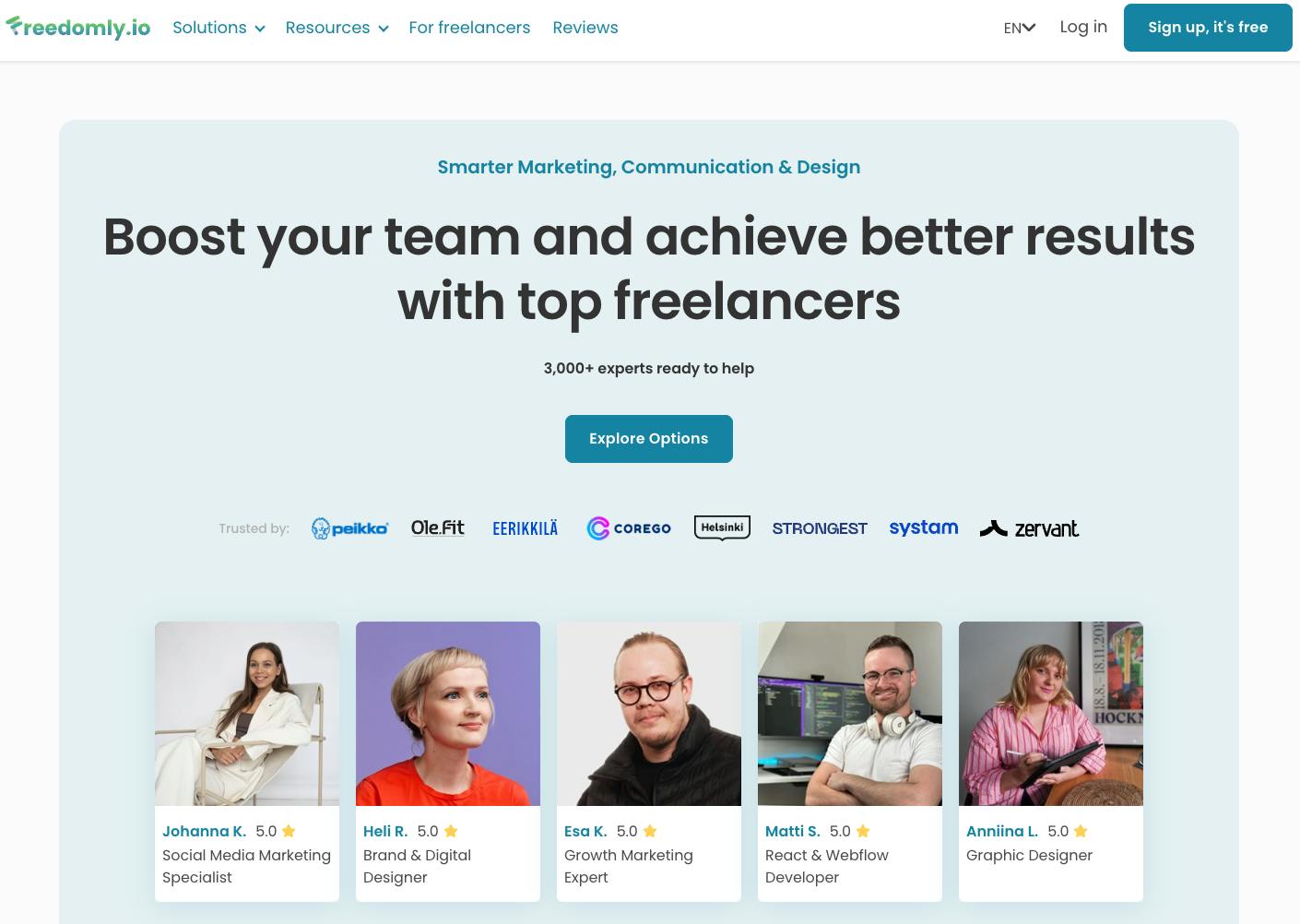
Freedomly
Freedomly helps companies find marketing, communications, and design professionals in Finland.
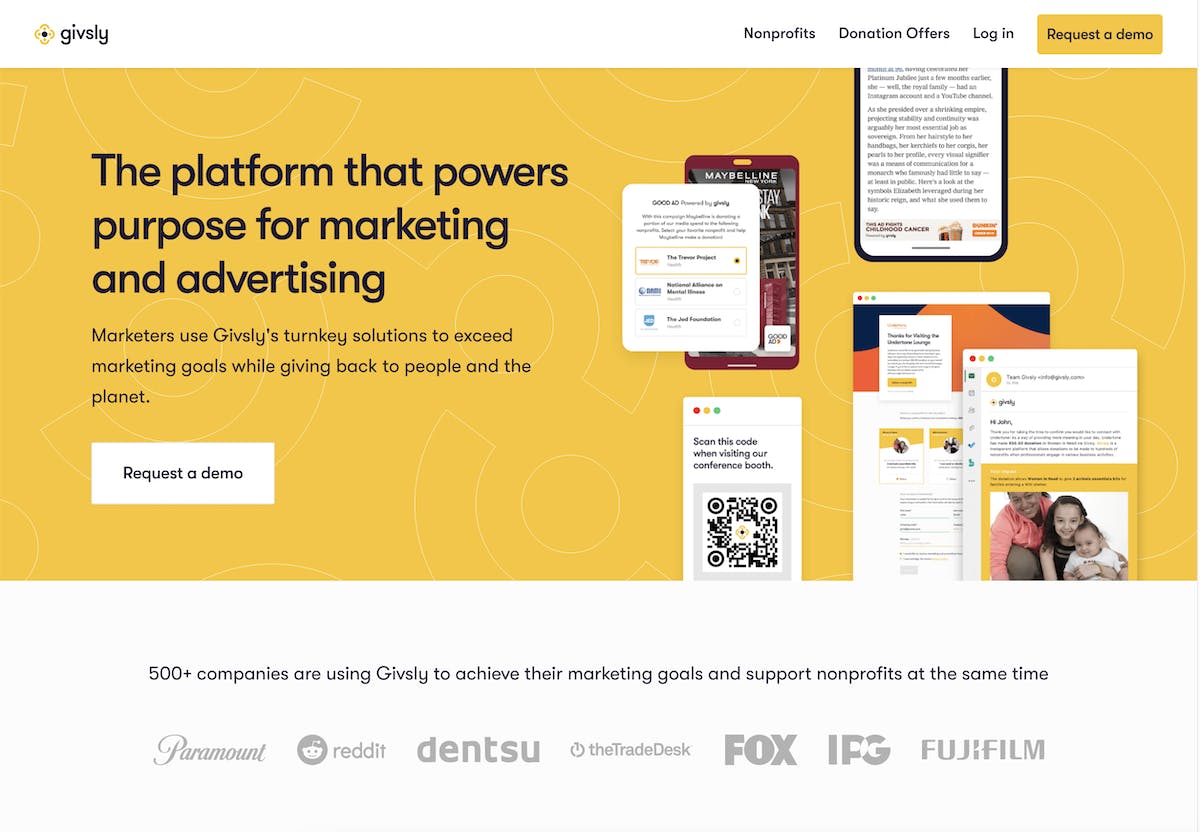
Givsly
Givsly connects businesses and non-profits and drives better business results by giving back to communities.
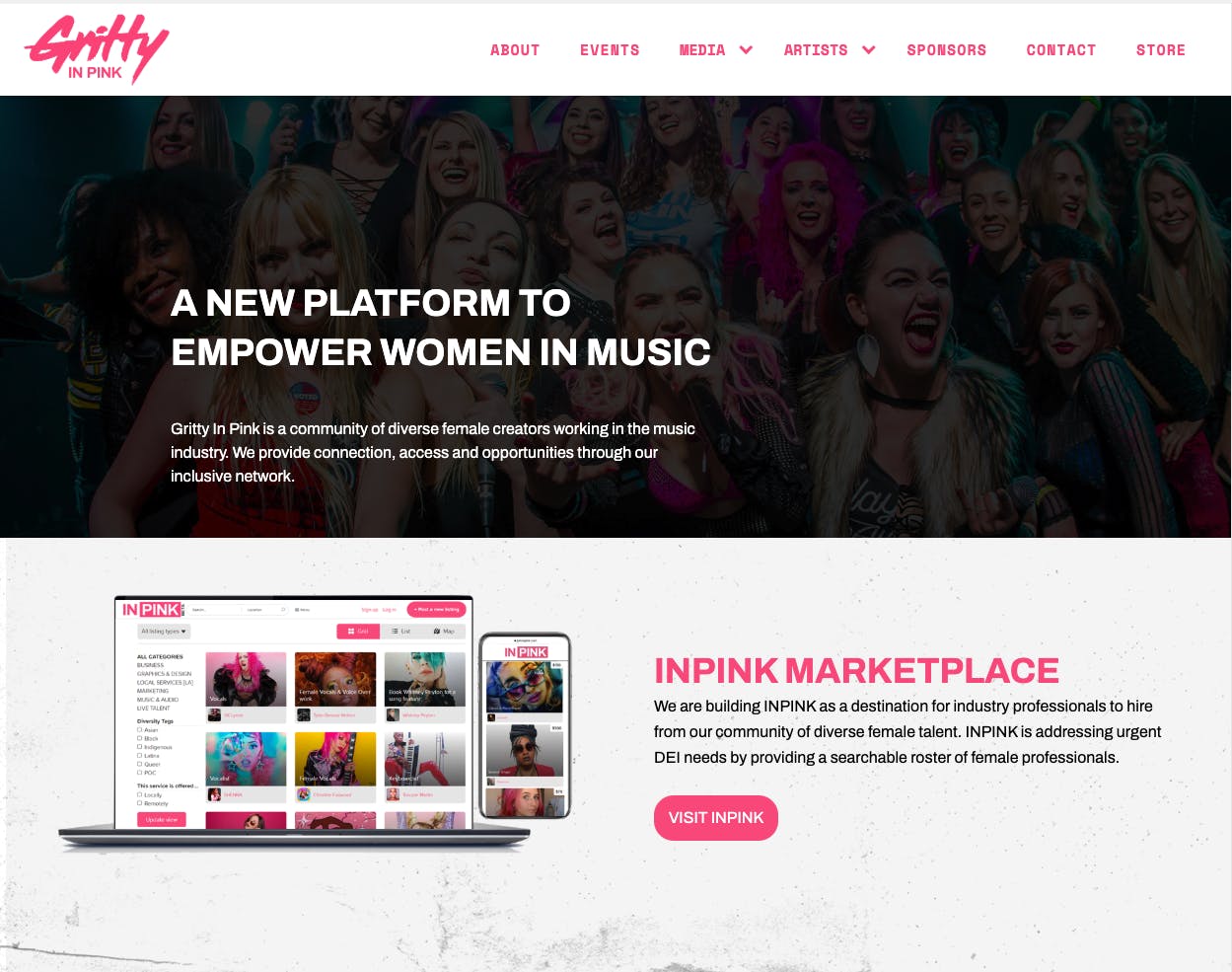
Gritty In Pink
Launched by Shira Yevin in 2019, Gritty In Pink evolved from a community-driven initiative into the INPINK marketplace. It’s designed to connect brands and entertainment professionals with diverse female creators, helping address a long-standing representation gap in the industry.
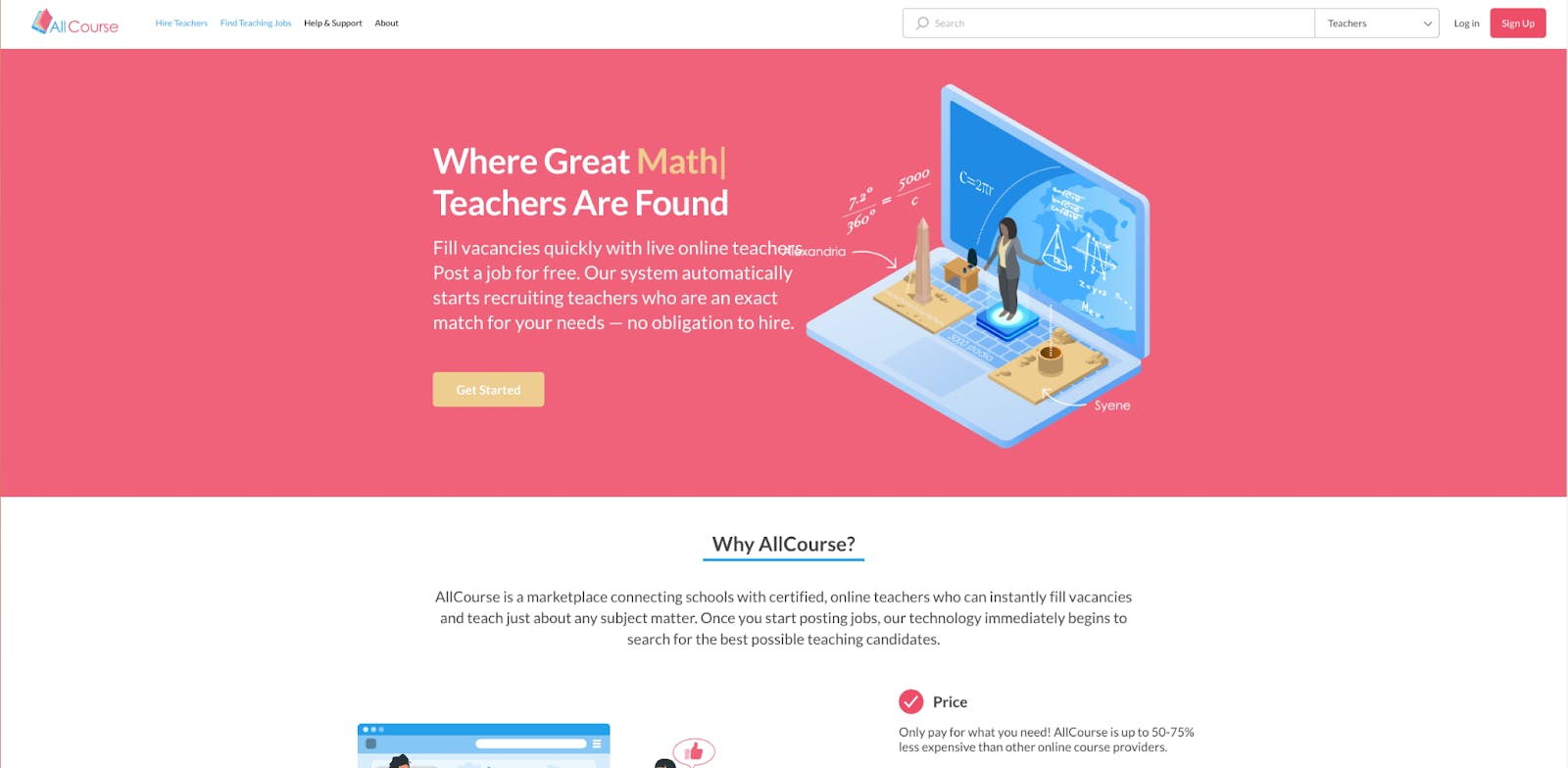
AllCourse
AllCourse is an online educational marketplace that helps schools fill teaching vacancies quickly by matching them with certified, live online teachers. They offer competitive rates—many of which are priced 50–75% lower than traditional options—without long-term contracts.

Aircraft For Sale
Powered by FLYING Media Group’s extensive aviation industry network, Aircraft For Sale is a trusted aviation B2B marketplace for buying, selling, and financing aircraft, aviation real estate, and spare parts.
The opportunity in B2B marketplaces is bigger than ever: enormous transaction volumes, underserved niches, and a global shift toward digital procurement.
Success, however, depends on more than just spotting the opportunity. Your B2B marketplace must validate a real need, earn trust, and move fast enough to capture early momentum.
That’s where Sharetribe comes in. With over a decade of experience powering marketplaces worldwide, Sharetribe gives you everything you need to launch quickly, handle complex B2B workflows, and scale confidently. Our no-code builder gets you to market in days, while our APIs and Expert Network give you the flexibility to customize as you grow.
Don’t wait to realize your idea. Start a free trial of Sharetribe and begin building your B2B marketplace today.
Commissions typically range from 5–15% of each transaction, depending on deal size and vertical.
Many platforms also layer in hybrid models, such as subscriptions or listing fees, to diversify revenue and ease supplier adoption.
Yes. No-code platforms like Sharetribe let you launch a functional B2B marketplace without technical resources.
You can integrate custom features through APIs or bring developers on board as you scale. However, B2B transactions are so complex that most marketplaces will need to add custom-coded functionality on top of the no-code essentials sooner or later.
You can partner with third-party financing providers that assume credit risk and handle collections. Some marketplaces also integrate factoring, invoice financing, or escrow services to extend net terms safely.
Here are the main B2B marketplace metrics to track:
- Seller-side and buyer-side liquidity
- Repeat purchase rate
- Supplier churn
- GMV retention
- Unit economics (CAC vs. CLV)
Together, these metrics reveal whether your marketplace is creating real, repeatable value for both buyers and suppliers, which is the clearest signal that your model is working.
Yes, but differently than in B2C. Mobile-friendly tools are essential for quick approvals, messaging, and tracking orders on the go. However, most research and ordering still happen on desktop.
Start your 14-day free trial
Create a marketplace today!
- Launch quickly, without coding
- Extend infinitely
- Scale to any size
No credit card required
